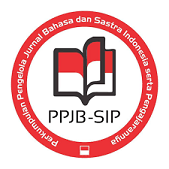MODEL KOOPERATIFTIPE STADDALAM PEMBELAJARAN MENULIS FABEL DI KELAS VII SMP NEGERI 2 SERIRIT
DOI:
https://doi.org/10.23887/jjpbs.v9i2.20399Abstract
Penelitian ini bertujuan untuk mendeskripsikan (1) pelaksanaan pembelajaran menulis teks fabel menggunakan Model Kooperatif STAD (2) hasil belajar siswa setelah menggunakan model pembelajaran kooperatif tipe STAD (3)mengetahui respons siswa terhadap pelaksanaan pembelajaran menggunakan Model Kooperatiftipe STAD. Penelitian ini menggunakan rancangan penelitian deskriptif kualitatif dan deskriptif kuantitatif dengan subjek guru bahasa Indonesia, siswa kelas VIIdi SMPN 2 Seririt. Objek penelitian ini adalahpelaksanaan,hasil dan respons siswa terhadap Model KooperatifSTAD. Data dikumpulkan dengan metode observasi, dokumentasi dan angket. Analisis data dilakukan dengan cara reduksi data, penyajian data, dan, penyimpulan. Adapun hasil penelitian ialah (1)pelaksanaan pembelajaran model STAD menggunakan 16 langkah, sesuai dengan langkah model tipe STAD (2) hasil belajar siswa mendapat hasil yang baik (83,55)dan (3) kelas VII merespons sangat positifterhadap model pembelajaran kooperatif tipe STAD.Downloads
Published
2019-09-05
Issue
Section
Articles
License
Authors who publish with the Jurnal Pendidikan Bahasa dan Sastra Indonesia Undiksha agree to the following terms:- Authors retain copyright and grant the journal the right of first publication with the work simultaneously licensed under a Creative Commons Attribution License (CC BY-SA 4.0) that allows others to share the work with an acknowledgment of the work's authorship and initial publication in this journal
- Authors are able to enter into separate, additional contractual arrangements for the non-exclusive distribution of the journal's published version of the work (e.g., post it to an institutional repository or publish it in a book), with an acknowledgment of its initial publication in this journal.
- Authors are permitted and encouraged to post their work online (e.g., in institutional repositories or on their website) prior to and during the submission process, as it can lead to productive exchanges, as well as earlier and greater citation of published work. (See The Effect of Open Access)







